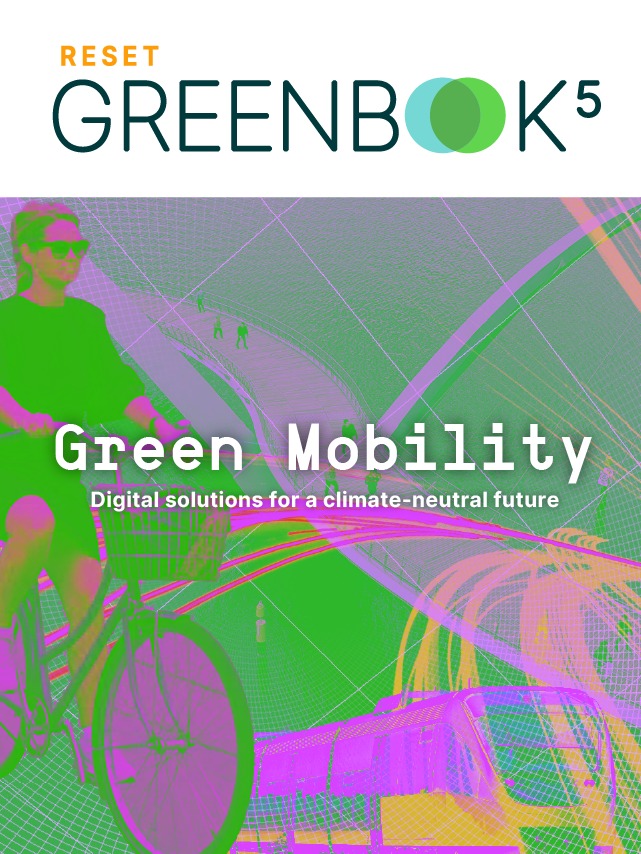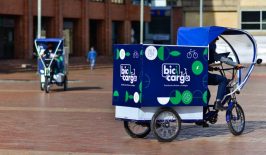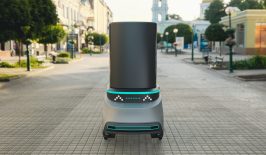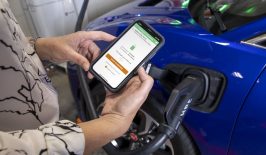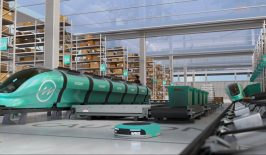Once a common sight in large cities across the world, overhead electric cables have been powering public transport for generations. However, as private car ownership increased in the 1950s, many fell by the wayside and were destined to be removed or relegated as historical curiosities. But they could be about to make a return — on our highways.
A new study from Georgia Tech’s College of Engineering has looked into the feasibility and benefits of using overhead cable line (OCL) technology to power e-highway trucks on motorways. The study envisioned a new generation of e-trucks and tractor-trailers equipped with roof-mounted arms known as pantographs. Roof-mounted sensors would detect the presence of overhead power cables, automatically deploying the pantograph. When these make contact with the OCL, the vehicle should shift from an onboard battery and combustion engine to draw power directly from the grid.
The assessment, published in Environmental Research: Infrastructure and Sustainability, found that traditional diesel trucks would release around 2.5 times more greenhouse gases than overhead-line and hybrid-powered vehicles. It also suggested that the technology would become environmentally and economically beneficial over both diesel and battery-powered trucks once adoption reached 10 percent, despite additional costs and emissions coming from the installation of the overhead cables.
The technology is currently being explored and tested in several nations, including the United States, Germany and Sweden. Having pioneered the technology in the 1880s, Siemens is also leading the way with their eHighway system. A 10-kilometre stretch of eHighway has been established in Hesse, with smaller stretches in Sweden and the US.
According to Siemens, OCL technology would extend the operational range of e-trucks by reducing the burden on their onboard batteries. Long-haul logistical journeys over 500 kilometres are almost exclusively driven on highways, and 89 percent of all German trucks only drive around 50 kilometres once leaving the highway. This means onboard batteries could only be used for “first and last mile” driving and overtaking.
Not only does this drastically increase the range of e-trucks (a traditional battery-powered truck only has a range of 200 kilometres), but it could also reduce the size, expense and resources of pre-existing e-vehicle batteries.
The Federation of German Industries recommends 4,000 kilometres of autobahn should be electrified. They predict this would provide an economic incentive for 80 percent of German heavy duty trucks to switch to OCL technology. An individual 40-ton truck could save up to 16,000 EUR for every 100,000 kilometres travelled. Additionally, over seven million tons of carbon could be saved if just 30 percent of trucks adopt OCL charging.
However, these statistics come with a big caveat. The Georgia Tech study revealed only certain cities, states and nations would actually benefit from OCL technology. In some cases, it might actually increase emissions over diesel powered vehicles. It all depends on where the electricity comes from in the first place. Once a vehicle shifts to using electricity, emissions are displaced, rather than eliminated, and it’s possible power stations may produce more carbon and other greenhouse gases per OCL truck than a diesel truck would have produced on its own.
Green Mobility – Digital solutions for a climate-neutral future
Autonomous vehicles, e-mobility, AI-controlled traffic planning, new modes for moving from A to B — what will the mobility of tomorrow look like?
We present the digital solutions being proposed for climate-neutral transport and logistics and discuss the new challenges of “digital mobility” in this dedicated special feature.
For example, the technology may be best suited for nations which already produce a significant amount of electricity from renewable sources, such as Sweden, Germany, France, Belgium and Brazil. Nations which still rely heavily on fossil fuels, such as India, China, Poland, South Africa and Estonia, are likely not ready for widespread OCL implementation. For the United States, it varies on a state-by-state basis. For cleaner states, such as New York, Washington D.C, Vermont and Oregon, it would be beneficial. Meanwhile, it would be counterproductive in dirtier states such as West Virginia, Wyoming, Kentucky, Utah, and Missouri.
There may be additional concerns to implementing the technology, not least major disruption caused by installation to the arterial trade and logistical routes of a nation.
Ultimately, however, the factors around OCL technology once again illustrate the importance of decarbonising the foundations of our power generation with reliable, proven renewable methods.

